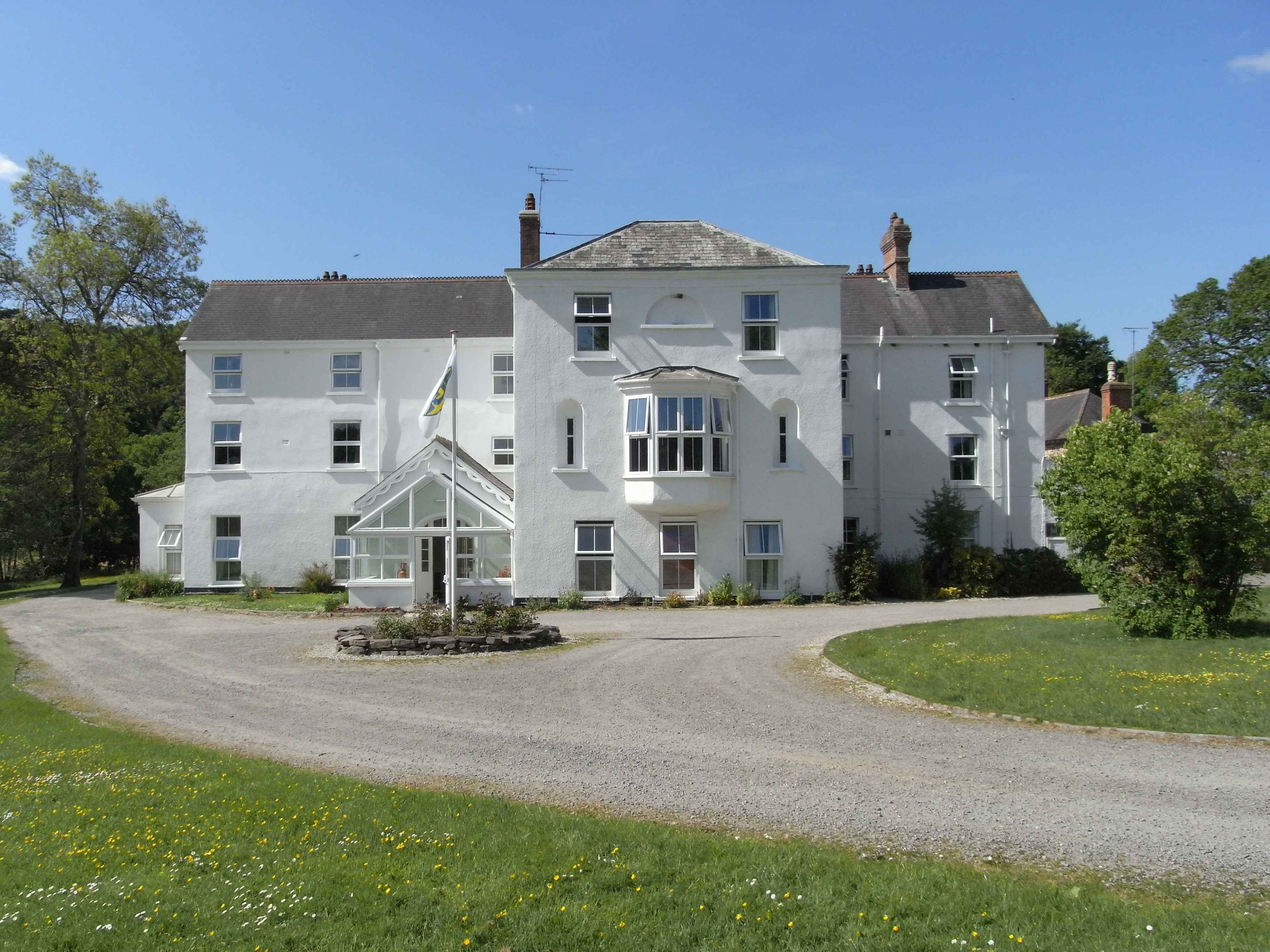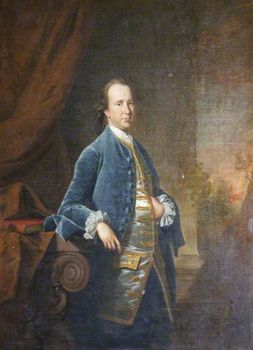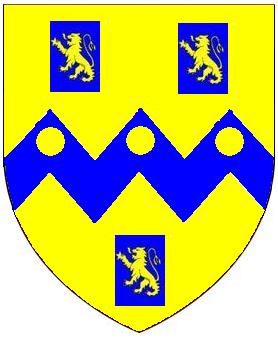|
Beam, Great Torrington
Beam is an historic estate in the parish of Great Torrington, Devon, England. Beam House is situated about 1 1/2 miles north-west and downstream of that town, on the right-bank of the River Torridge. Both the Rolle Canal and the railway crossed the river nearby. It occupies a particularly beautiful setting, described by Lauder (1986) thus: ''"For lovers of rivers and woodland there can be few lovlier settings for a house than this. Steeply wooded banks shelter the valley and the house is situated on slightly higher ground above lush water meadows, almost completely surrounded by the Torridge"'' The estate was a subsidiary seat of the Rolle family, lords of the manor of Great Torrington, whose main seat was Stevenstone on the other (south) side of that town and therefore upstream from Beam. It was an outpost of the Royalists during the Civil War. Much of the estate is today owned by Baron Clinton, as heir to the Rolles, but it has had many occupants, including use by the army in b ... [...More Info...] [...Related Items...] OR: [Wikipedia] [Google] [Baidu] |
Weare Giffard
Weare Giffard is a small village, civil parish and former manor in the Torridge district, in north Devon. The church and manor house are situated 2 1/2 miles NW of Great Torrington in Devon. Most of the houses within the parish are situated some 1/2-mile east of the church. The church is situated on a hillside to the north and slightly above the wide and flat valley floor of the River Torridge. The Church of the Holy Trinity and the adjacent Weare Giffard Hall are designated members of the Grade I listed buildings in Devon. History The historian of Devon Tristram Risdon (d.1640) supposed the name Weare to be derived from a fish weir which was historically situated in the river to catch fish. The construction of a fish-weir generally required a licence from the feudal overlord, as naturally these affected the catches of other inhabitants further along the river. Many disputes are recorded in the medieval records over disputes concerning fish-weirs. Descent of the manor Giffar ... [...More Info...] [...Related Items...] OR: [Wikipedia] [Google] [Baidu] |
Palmer, Mary (DNB00)
Mary Palmer (née Reynolds; 9 February 1716 – 27 May 1794) was a British author from Devon who wrote ''Devonshire Dialogue'', once considered the "best piece of literature in the vernacular of Devon." She was the mother of painter Theophila Gwatkin and sister of the artists Sir Joshua Reynolds and Frances Reynolds and of the pamphleteer Elizabeth Johnson. Origins Mary was the eldest daughter and third child of Samuel Reynolds, master of the Plympton Earl grammar school, Devonshire, by his wife, Theophila Potter. She was seven years older than her brother Joshua Reynolds and her fondness for drawing is said to have influenced him when a boy. In 1740 she provided £60, half of the premium paid to Thomas Hudson the portrait-painter, for Joshua's pupilage, and 9 years later advanced money for his expenses in Italy.Lee, Elizabeth. Mary Palmer. Dictionary of National Biography, 1885–1900, Vol.43. Joshua Reynolds painted two portraits of his sister Mary, one made about 174 ... [...More Info...] [...Related Items...] OR: [Wikipedia] [Google] [Baidu] |
Joshua Reynolds
Sir Joshua Reynolds (16 July 1723 – 23 February 1792) was an English painter, specialising in portraits. John Russell said he was one of the major European painters of the 18th century. He promoted the "Grand Style" in painting which depended on idealization of the imperfect. He was a founder and first president of the Royal Academy of Arts, and was knighted by George III in 1769. Early life Reynolds was born in Plympton, Devon, on 16 July 1723 the third son of the Rev. Samuel Reynolds, master of the Plympton Free Grammar School in the town. His father had been a fellow of Balliol College, Oxford, but did not send any of his sons to the university. One of his sisters was Mary Palmer (1716–1794), seven years his senior, author of ''Devonshire Dialogue'', whose fondness for drawing is said to have had much influence on him when a boy. In 1740 she provided £60, half of the premium paid to Thomas Hudson the portrait-painter, for Joshua's pupilage, and nine years later a ... [...More Info...] [...Related Items...] OR: [Wikipedia] [Google] [Baidu] |
Mary Palmer
Mary Palmer (née Reynolds; 9 February 1716 – 27 May 1794) was a British author from Devon who wrote ''Devonshire Dialogue'', once considered the "best piece of literature in the vernacular of Devon." She was the mother of painter Theophila Gwatkin and sister of the artists Sir Joshua Reynolds and Frances Reynolds and of the pamphleteer Elizabeth Johnson. Origins Mary was the eldest daughter and third child of Samuel Reynolds, master of the Plympton Earl grammar school, Devonshire, by his wife, Theophila Potter. She was seven years older than her brother Joshua Reynolds and her fondness for drawing is said to have influenced him when a boy. In 1740 she provided £60, half of the premium paid to Thomas Hudson the portrait-painter, for Joshua's pupilage, and 9 years later advanced money for his expenses in Italy.Lee, Elizabeth. Mary Palmer. Dictionary of National Biography, 1885–1900, Vol.43. Joshua Reynolds painted two portraits of his sister Mary, one made about ... [...More Info...] [...Related Items...] OR: [Wikipedia] [Google] [Baidu] |
Palmer House, Great Torrington
Palmer House is a grade II* listed Georgian residence built in 1752 in the town of Great Torrington, North Devon, England. It is notable as it retains many original features, including fine ornate plaster ceilings, marble and carved fireplaces, mahogany doors and a fine balustraded staircase. History Palmer House was built in 1752 by John Palmer, three times Mayor of Great Torrington and husband of Mary Reynolds, the author of ''Devonshire Dialogue'' and eldest sister of the artist Sir Joshua Reynolds, both brought up at Plympton in South Devon, who painted the portraits of his Palmer nieces. The house remained in the ownership of the Palmer family until the 1890s. Visitors Many famous people visited and stayed at the house. Sir Joshua Reynolds, brother-in-law of the builder, was a regular visitor.Lee, Elizabeth. Mary Palmer. Dictionary of National Biography, 1885-1900, Vol.43. Dr. Samuel Johnson Samuel Johnson (18 September 1709 – 13 December 1784), often called ... [...More Info...] [...Related Items...] OR: [Wikipedia] [Google] [Baidu] |
Roman Catholic Archdiocese Of Cashel And Emly
The Archdiocese of Cashel and Emly ( ga, Ard-Deoise Chaisil agus Imligh) is an ecclesiastical territory or archdiocese of the Catholic Church ( particularly the Roman Catholic or Latin Church) located in mid-western Ireland and the metropolis of the eponymous ecclesiastical province. The cathedral church of the archdiocese is the Cathedral of the Assumption in Thurles, County Tipperary. The incumbent archbishop of the archdiocese is Kieran O'Reilly. History The original dioceses of Cashel and Emly were established by the Synod of Ráth Breasail in 1111. Diocese of Cashel The Diocese of Cashel was elevated to the rank of ecclesiastical province, which was roughly co-extensive with the traditional province of Munster, by the Synod of Kells in 1152. Since the Papal Legate, Giovanni Paparoni, awarded the pallium to Donat O'Lonergan in 1158, his successors have ruled the ecclesiastical province of Cashelalso sometimes known as Munster until 26 January 2015. Diocese of Em ... [...More Info...] [...Related Items...] OR: [Wikipedia] [Google] [Baidu] |
Roman Catholic Diocese Of Ferns
The Diocese of Ferns ( ga, Deoise Fhearna) is a Roman Catholic diocese in south-eastern Ireland. It is one of three suffragan dioceses in the ecclesiastical province of Dublin and is subject to the Archdiocese of Dublin.Diocese of Ferns Catholic-Hierarchy''. Retrieved 2 June 2011. The incumbent Ordinary is Gerard Nash. Geographical remit The See covers most of[...More Info...] [...Related Items...] OR: [Wikipedia] [Google] [Baidu] |
Denys Rolle (died 1797)
Denys Rolle (1725 – 1797) of Hudscott, Beam, Stevenstone and Bicton in Devon and East Tytherley in Hampshire, was an independent Member of Parliament for Barnstaple, Devon, between 1761 and 1774. He inherited a large number of estates and by the time of his death he was the largest landowner in Devon. He was a philanthropist and generous benefactor to charities and religious societies. He spent much of his life in Florida attempting to establish an "ideal society", a Utopian colony of poor, homeless or criminal English persons named Rollestown or Charlotta. The project was a failure and Rolle recorded his colonial adventure in great detail in a lengthy official complaint made in 1765 to the British government entitled ''The Humble Petition of Denys Rolle, Esq., Setting Forth the Hardships, Inconveniences, and Grievances Which Have Attended Him in His Attempts to Make a Settlement in East Florida, Humbly Praying Such Relief as in their Lordships Wisdom Shall Seem Meet''. His ... [...More Info...] [...Related Items...] OR: [Wikipedia] [Google] [Baidu] |
Frithelstock
Frithelstock (pronounced ''Frizzlestock'') is a village, civil parish and former manor in Devon, England. It is located within Torridge local authority area and formed part of the historic Shebbear hundred. The parish is surrounded, clockwise from the north, by the parishes of Monkleigh, Great Torrington, Little Torrington, Langtree and Buckland Brewer. In 2001 its population was 366, down from 429 in 1901. The name derives from the Anglo-Saxon ''Frithulac's Stocc''. The ruins of Frithelstock Priory are adjacent to the north east side of the parish church of St Mary and St Gregory, and represent the only substantial remains of a monastic house in Devon. As of 2013 the village had one public house, the Clinton Arms, which since closed in 2018. The parish church of St. Mary & St. Gregory was enlarged in the 15th century and underwent a Victorian restoration in about 1870. History The Domesday Book of 1086 lists ''Frelelestoch'' as one of the seventy-nine Devonshire holdings of ... [...More Info...] [...Related Items...] OR: [Wikipedia] [Google] [Baidu] |
John Swete
Rev. John Swete (born John Tripe) (baptised 13 August 1752 – 25 October 1821) of Oxton House, Kenton in Devon, was a clergyman, landowner, artist, antiquary, historian and topographer and author of the ''Picturesque Sketches of Devon'' consisting of twenty illustrated journals of Devonshire scenery.Published in four volumes as ''Travels in Georgian Devon: The Illustrated Journals of the Reverend John Swete, 1789–1800'', edited by Todd Gray and Margery Rowe (Halsgrove, 1997). He was a connoisseur of landscape gardening, and much of his ''Travel Journals'' consist of his commentary of the success or otherwise of the landscaping ventures of his gentry friends, neighbours and acquaintances in Devon. He himself undertook major building and landscaping works at Oxton. Biography John Tripe was born in 1752, the son Nicholas Tripe, a surgeon in Ashburton, Devon, by his wife Rebecca Yard, according to Swete's ''Journal'' a member of the ancient Devonshire gentry family of Yard of ... [...More Info...] [...Related Items...] OR: [Wikipedia] [Google] [Baidu] |
Henry Rolle, 1st Baron Rolle
Henry Rolle, 1st Baron Rolle (7 November 1708 – 17 August 1750) of Stevenstone, Devon, was a British landowner and politician. Origins Rolle was the eldest son of John Rolle (1679–1730), Member of Parliament for Devon (who had declined the offer of an earldom by Queen Anne) by his wife Isabella Walter, daughter of Sir William Walter, 2nd Baronet, of Saresden, Oxfordshire. His younger brother John Rolle Walter assumed the surname of Walter on succeeding to the estates of his maternal uncle and also represented Devon in Parliament. Career Rolle succeeded his father as Member of Parliament for Devon on the latter's death in 1730, and held the seat until 1741. From 1741 to 1748 he represented Barnstaple in Parliament. In 1748 he was raised to the peerage as Baron Rolle of Stevenstone, in the County of Devon, and his vacated seat at Barnstaple was won by his first cousin Sir Bourchier Wrey, 6th Baronet (c. 1715–1784), of Tawstock, Devon. Death and succession Lord Rolle died ... [...More Info...] [...Related Items...] OR: [Wikipedia] [Google] [Baidu] |



.jpg)


